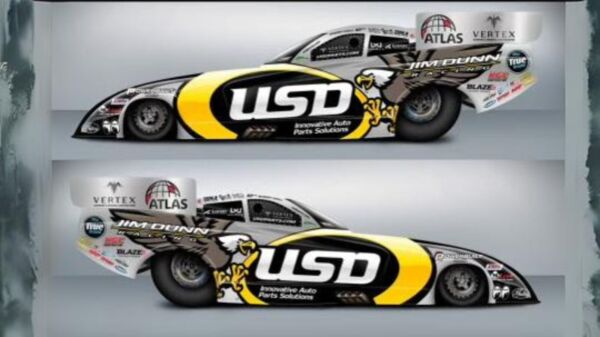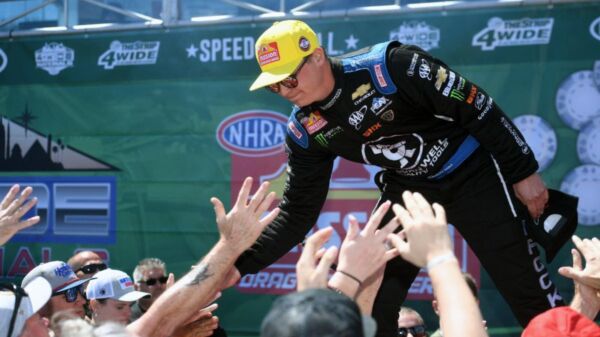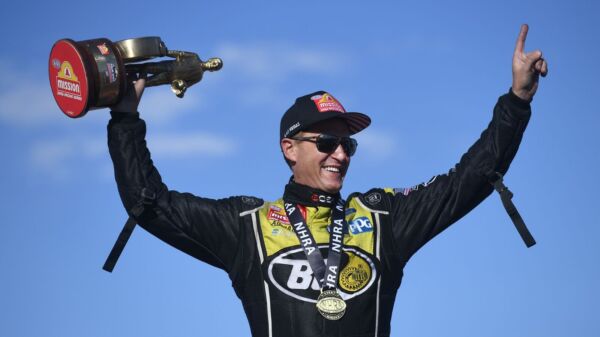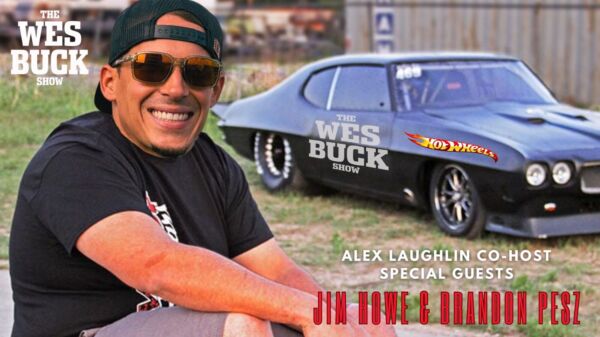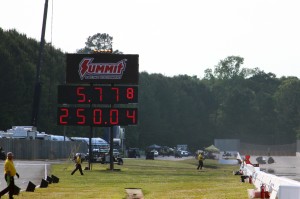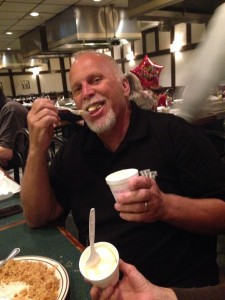I love NHRA Pro Modified. If I’m the NHRA–and obviously I am not–I’m all over this deal. It has all the makings of truly compelling motor sports: a smorgasbord of passionate, personable and colorful characters (for the most part), fierce on-track competition and built-in rivalries between wildly different engine combinations, makes and models, both new and old. Unfortunately for myself (and anyone who might share my sentiment), a multi-million-dollar lawsuit following the canning of Pro Stock Truck has more than likely snuffed out any chance of the NHRA ever truly embracing another professional category, and it’s an absolute tragedy. But I digress…
Since the inception of Pro Modified in 1990 there has been one common thread–not everyone’s going to agree on the rules. Over the course of two-and-a-half decades, it’s been a constant ebb and flow of one combination–nitrous oxide-injected, supercharged or turbocharged–having a perceived performance advantage and the other guys being mad as hell about it. Only in recent years has NHRA (which took on Pro Mod in 2001 as an exhibition class before finally acknowledging it in 2010 as a pro class), started to encroach on the Promised Land that is parity amongst the three combos. Parity, though, true parity, like beauty, is in the eye of the beholder and, at least in my opinion, is basically a myth, an impossibility.
You could easily make an argument for turbo cars having the most blatant performance advantage in recent years–especially when you consider that turbocharged whips accounted for all but one top speed mark in 2013–but NHRA has already acted on that matter, stepping in with a mandated boost controller and boost limit. Three races into the 2014 NHRA Pro Mod Drag Racing Series season, however, and following last weekend’s NHRA Southern Nationals in Atlanta, all eyes are on Rickie Smith and his IDG-sponsored, nitrous oxide-injected Pro Mod Camaro.
Within 48 hours of the reigning class champion lowering the boom on the class with an are-you-kidding-me 5.778-second, 250.04-mph lap in the opening round of eliminations (the quickest pass ever recorded by a nitrous Pro Mod over the quarter-mile according to the DRAG ILLUSTRATED Top 8), NHRA got right after lowering the boom on Rickie Smith–issuing a “parity adjustment” for NHRA Pro Mod by increasing the minimum weight for nitrous-assisted entries from 2,425-pounds to 2,475-pounds. Not surprisingly, the “Tricky” one isn’t happy about it.
“I’m not a guy who gets on the Internet and talks a bunch of junk,” says Smith, who clearly was doing his best to remain relatively even-keeled while discussing the subject over the phone. “Throughout my career I’ve always tried to let my hard work and the scoreboards do my talking for me, but this right here is about as much disrespect as they could ever do. They take a world champion–after he’s worked his ass off, stayed away from home, did his testing, went through 147 pistons last year to get to where I’ve got–and take a pencil and just knock me down to my knees again. That’s just unreal.”
Smith, who says he burned through another 50 pistons while competing in the Arabian Drag Racing League Series in Qatar over the offseason trying to perfect the tune up on his bottle-fed Chevy, knows that speaking out on the rule change likely won’t change matters. Regardless, he doesn’t want what he feels at the bare minimum is an inconsistency on behalf of rule makers when it comes to maintaining parity to go unnoticed.
“The Harleys have been dominating Pro Stock Motorcycle for three years–what has NHRA done about it?” Smith asks. “I run good at one race–one race–and they change the rules. You go out and test, figure out how to run a little better with this stuff, and you take a pencil and punish a guy for it. It’s as low as it gets. This is total discrimination against one guy right now. If they’d do something to these Harleys, I wouldn’t say that, but they’ve let them dominate for three years. They’re picking and choosing who they want to do good here.”
Without further exploring any anti-Rickie Smith notions that may or may not exist within NHRA’s technical department, it’s safe to say not everyone was shocked by the technical bulletin posted to NHRARacer.com the afternoon of May 21st, just two days after the conclusion of the Atlanta event.
“I knew it was coming,” says Shannon Jenkins, better known as the “Iceman” and inarguably the most successful nitrous Pro Mod racer in the history of mankind. “You can’t run like that and expect anything else. He had the field covered and then some. I’m sure Rickie’s hot, but it’s not him that’s going to be bothered by it–it’s the nitrous teams that are out here struggling that are on the losing end of the deal.”
There are people, however, that are equally upset about the proposed parity adjustment, but for dramatically different reasons. Jimmy Rector, crew chief for Danny Rowe and Steve Matusek’s pair of supercharged Pro Mod Camaros and a world champion Top Alcohol Funny Car racer in his own right, was less than impressed.
“Listen, it’s a joke,” Rector says. “First rule to go against the nitrous cars in 12 years and it won’t hurt them at all. I hope they sleep well at night. It needed to be 150 [pounds]. It’s one-hundredth, maybe two–max.”
Others, such as Billy Glidden, a longtime nitrous racer, yet relative newcomer to Pro Mod, can barely muster up the energy to even care–especially after making a career-best 6.006-second, 231.87-mph pass during the Friday night session in Atlanta only to DNQ for a third straight race.
“I haven’t been doing good enough to qualify anyway,” says Glidden. “I don’t know that I deserve to have an opinion, but Sunday morning I had a feeling there’d be a change coming. So, I asked that maybe they do something like NMCA does–let anything that comes in at less than 850 inches or whatever have a lesser weight. The problem with that, though, is that I’m probably the only one that would apply to. I didn’t know they were going to make a rule change at that time, but I had a pretty good feeling and I figured I might as well ask them to consider putting it only on the bigger nitrous engines. It may not sound like much, but if these things are making let’s just say two horsepower per cubic inch and Rickie has say 65 to 70 inches more than me, instantly he has 150 horsepower on me. I would have rather them take weight off the other cars than to penalize us. Regardless, I don’t feel like I should have much of a say. That run of Rickie’s was impressive–period–and I don’t think 50 pounds is even going to hurt him.”
Steve Matusek, a mechanical engineer and founder and president of high-performance fuel system manufacturer Aeromotive, is one of the few drivers in the NHRA Pro Mod ranks who have experience behind the wheel of cars with different power adders. He shares the view that his crew chief, Jimmy Rector, and Billy Glidden has that 50 pounds won’t do much to slow down Smith–but still applauds NHRA and Vice President of Technical Operations Glen Gray for taking action.
“For me, it’s simple,” starts Matusek. “NHRA does not want these cars to go over 250 mph, and I agree completely because it becomes unsafe with a 2,650-pound car in the quarter mile. Now that the nitrous cars are up to par with the other two combinations–and being that you can’t take restrictions off the turbo and supercharged cars without having them, too, exceeding 250 mph–it’s only logical that you make a move to slow down the nitrous cars.
“I’ve been on the other side of the fence here,” Matusek continues. “I raced a turbo car for many, many years and I know what it’s like to invest countless hours trying to improve your program and then have a rule change affect what you’re doing. When NHRA was working to slow down the turbo cars last year, I had many conversations with the technical department, but I understood that it was in the best interest of the class. They’re not taking shots in the dark; they’ve got a math model for this stuff–they’re doing the work behind the scenes to make the most educated decision possible.”
All I know is that Rickie Smith has figured something out. Again referencing the DI Top 8, Smith’s two 5.70 licks in Atlanta (a 5.795/250.13mph followed by a 5.778/250.04mph) were good enough to sneak past Mike Castellana’s long-standing 5.781 record from 2011 and obliterate his 246.89-mph speed record and are most assuredly not the result of accidentally having his driving gloves on the wrong hands all these years. Thank God, it’s not up to me to decide whether “Tricky” (and all nitrous-assisted entries competing in NHRA Pro Mod) needed to put on a little weight–that’s Glen Gray’s problem.
“I spoke to Rickie today and, honestly, he seemed to understand; he was very professional,” says Gray, who verified Matusek’s belief that NHRA’s decision was not a wild guess based on little more than two quarter-mile passes over the course of 24 hours. “It’s not a shot in the dark. It’s a process that we’ve used for determining whether we need to make a change or not in Pro Stock Motorcycle, and it’s the same technique we’ve used in Pro Mod for the last four or five years.
“Basically, we look at the quickest run for any of the three combinations and the average of the four quickest runs,” he continues. “We look at this on a race-by-race basis and if it’s more than five-hundredths quicker than any other set of data it will trigger what we call a review. That review just means that we’re going to look at more data more carefully before we make any kind of decision. We may decide to do nothing, but it triggers a deeper review.”
According to Gray, nitrous-assisted Pro Mods were about two-hundredths quicker (in terms of both the quickest run and the average of the four quickest runs) over the course of the last 7 races of 2013–almost enough to trigger a review, but just shy. At the last NHRA Pro Mod event in Houston the nitrous cars came within two-thousandths of spurring NHRA into potential action, so Smith’s back-to-back soul crushers in Atlanta weren’t totally out of left field, though, admittedly, were somewhat shocking when attached to a 250-mph trap speeds.
“Obviously, this last weekend in Atlanta the nitrous cars were much faster than everyone,” says Gray. “It triggered a review and we went back and looked at it. We said, ‘Okay, they’re at 2,425–they are really light.’ We looked at the incremental numbers and we looked at the scale sheets to see what everyone weighs. You don’t want to hang 50 pounds on a combination that is already running 20 to 30 pounds over, or whatever the case may be. We’re looking at a lot of data. I probably spent a good four or five hours looking at the data.
“Ultimately, we felt like there were maybe two-or-three hundredths that we need to even up and 50 pounds–another thing that there are formulas for–was the move we made. We’ll continue to monitor it and we’re hoping that this evens things back out. I want to make something clear–it’s not just Rickie. There are a couple other nitrous cars that have been running very well. We’ve had a nitrous car in every final this year, two in the final of the season opener. Several of them are pretty darn strong. Laurita went .83 this weekend. We’re definitely not picking on Rickie. We’re looking at all the strong nitrous cars.”
By all accounts, though without any sort of fancy formula or squadron of engineers to confirm, it would seem that a 50-pound weight penalty is going to have a guy like Smith back in the low 5.80 range, but that’s only if his 5.77 blitzkrieg was legitimately an all-out pass (where’s Rich Christensen when you need him?).
Truth be told, this feels a lot like the way of the drag racer. Most of the men and women who have been in this sport for any length of time will admit that there’s always something–forces at work to make it harder.
“When they changed the rules on turbo cars,” starts Harry Hruska, owner of Precision Turbo & Engine and the twin-turbo NHRA Pro Mod Camaro driven by Donnie Walsh, “I didn’t bitch about it. I went to work. That’s the spirit of drag racing. Every day there’s a new challenge. Whether it’s parity rules like this or conditions or a new tire compound that comes after years of racing on a previous version–it’s all part of it, it’s nothing new.
“When they changed the rules on the turbo cars–43 pounds of boost, new turbocharger rules, a totally different boost controller that virtually no one had ever used–it was a huge deal,” he continues. “It was like starting over; it was a game changer. I had a boost controller that we’d been using for 10 years and they took it away and gave us something else. That’s a huge deal. So, all the engines I had in 2012 became obsolete–I had to change my entire engine program, but like I said, it’s part of the deal.”
Without drawing any sort of conclusion on what can only be looked upon as a strong indicator that people genuinely care about NHRA Pro Mod (more than five hours worth of phone calls to DRAG ILLUSTRATED in less than 24 hours doesn’t tell me anything else), it’s hard to ignore one common denominator: NHRA isn’t interested in a 5.7-second, 250 to 260-mph Pro Mod class. No matter how any one person feels about it, that may well be the reality. But, boy oh boy, can 50 pounds ever get people fired up.
“Let me tell you what,” says Rickie Smith, beginning an epic final thought on the matter. “I’m ready to get out of the driver’s seat; I was ready last year. I’m willing to take a blower car or a turbo car – and now you better believe I’m going to get paid for this and I’m going to get paid up front before I start with somebody – but I’m willing to take either one of these cars, give me the guy I want to tune the motor, be it Steve Petty or Frank Manzo, let me run the program, let me set the cars up and call the shots, and I will embarrass everyone out here. Whoever wants to do it, you give me either one of those guys and I will ruin this class – period. I will ruin it. And the only reason I’m saying Petty or Manzo is because I don’t know how to tune those motors right now.
“I’m not one to brag,” he continues. “I’ve never done this, but they’ve got me pissed off and I’m telling the truth. I don’t know how to tune those things, but I know how to make it work. I will show them how dumb all these guys are. I hate to get like that, but I believe it, and may God strike me dead if I’m lying. It gripes me to death how fast these other cars could run if they knew how to run a car and they weren’t lazy. I know what these damn cars can do if I had control of ‘em. I got my nitrous car running good – I wanted to stay with it because I know how to do it – but I could take either one of these other two cars and outrun me right now. If they’d do the motor and let me do the ramrodding, I’ll outrun my car right now today.”
Now, that’s some real talk.
This story was originally published on May 22, 2014. 
